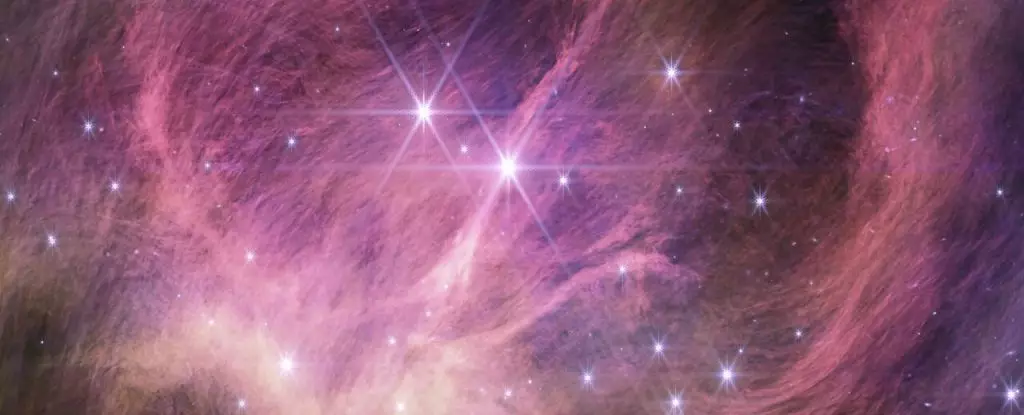A recent discovery in space has left astronomers scratching their heads. A newly found brown dwarf, a failed star that is not massive enough to undergo hydrogen fusion, is causing a stir in the scientific community. With a mass of only 3 to 4 times that of Jupiter, it is the lowest-mass object of its kind discovered yet. This finding raises questions about the formation process of stars and challenges our current understanding.
Stars form when a dense clump of gas and dust in space collapses under gravity. As the mass increases, the pressure and heat in its core reach the point of igniting hydrogen fusion, marking the birth of a star. However, not every collapsing clump gains enough mass for this process to occur. These objects are known as brown dwarfs. They follow the same formation process as stars but do not reach the critical mass required for hydrogen fusion to take place. It is important to note that brown dwarfs are not planets; they are smaller than white dwarf stars but larger than non-glowing “dark” planets. At a critical mass of around 13 Jupiters, a brown dwarf can fuse atoms of deuterium, a heavier isotope of hydrogen, but not hydrogen itself. Objects that form through gravitational collapse but do not ignite fusion are referred to as sub-brown dwarfs, planetary-mass brown dwarfs, or rogue planets.
A team of astronomers led by Kevin Luhman of Pennsylvania State University has been on a mission to find the smallest of these objects. Using the James Webb Space Telescope (JWST), they conducted a survey of the center of a young star cluster called IC 348. Brown dwarfs emit primarily in the infrared range, making the sensitivity of the JWST crucial for this study. The researchers found three previously unknown members of IC 348 that fit the profile of sub-brown dwarfs. These objects have masses ranging from three to eight Jupiters and temperatures between 1100 and 1800 Kelvin. The smallest of these new discoveries holds the record for the lowest-mass brown dwarf, with a mass of only three to four Jupiters.
Unraveling the Mystery
The existence of this record-breaking brown dwarf presents a challenge to our understanding of star formation. The current models can explain the formation of giant planets in a disc around a star, but the formation of such a small object without a disc is puzzling. The researchers wonder how the star formation process operates at such incredibly low masses. One possibility is that these objects are exoplanets that have been ejected from their planetary systems. However, the size of these objects and the nature of the cluster make this explanation unlikely. The researchers also note that the cluster is relatively young, leaving little time for planets to form and be ejected so far from their systems.
New Discoveries and New Questions
In addition to challenging star formation theories, these brown dwarfs have revealed another surprising aspect. Spectrographic analysis has detected the presence of an unidentified hydrocarbon in two of the objects. This molecule has been observed in the atmospheres of Saturn and Titan in our Solar System and in interstellar space but has never been seen in an extrasolar atmosphere before. This unexpected finding adds to the excitement and intrigue surrounding these unusual objects and the complex relationship between stars and planets.
The discovery of a record-breaking brown dwarf has raised significant questions about the process of star formation and our understanding of these failed stars. The existence of such a low-mass object challenges current models and prompts astronomers to rethink the way stars are born. Furthermore, the presence of an unidentified hydrocarbon in the atmosphere of these brown dwarfs introduces new chemical complexities to explore. As scientists continue to study and analyze these objects, the mysteries of the universe unfold, pushing the boundaries of our knowledge and opening up new avenues for exploration.



Leave a Reply